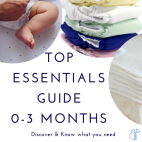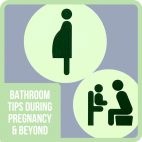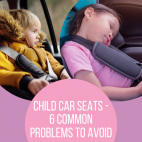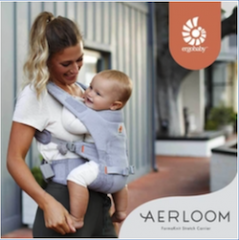Want More Sleep? 10 Questions to Ask Yourself Sleep Suitable for stages: 0 - 3 Months, 3 - 6 Months, 6 - 12 Months, 12 - 18 Months, 18 - 24 Months


There are so many factors that influence sleep that many people have written books about it. Not all sleep books are created equal, and you might read a few books before you settle into what advice fits with you, your baby and your lifestyle. After reading numerous baby sleep books and online resources from top experts, we have narrowed the information down to 10 top questions you can ask yourself around your baby's sleep. From there, you can find out more to work out what you can do to get more sleep.
The top 10 questions you can explore are as follows:
1. What is biologically normal sleep?
Having an idea of what is biologically normal for babies at different ages can help you set realistic expectations. It can also help you plan around your baby's sleep needs. It would take all day to go through the full biology of sleep in this article; however, once you know what questions to ask, it is easy to find out what you need to know. Most baby sleep books dedicate their opening chapters to explaining the biology of sleep.
Key ideas to understand:
- What do baby sleep patterns and sleep phases look like?
- How can sleep requirements vary from baby to baby?
- What is the circadian rhythm and its relationship to hormones?
- What is sleep pressure? Plus how to recognise it.
2. How can you balance your needs with your baby's needs?
Babies need a lot of attention, care and love. For new parents, this takes a lot of time, effort, patience, and a huge life change. It is hard to balance all the new responsibilities with meeting your own physical, emotional and mental health needs. When you aren't getting enough of what you need, especially sleep, everything can feel like a huge effort. When you aren't coping and feel anxious or stressed, your baby can perceive this emotional state and be affected by it. This is why taking care of your needs is also an important part of caring for your baby. Self-awareness, adaptability and growth are all parts of the parenting experience.
Key ideas to consider:
What level of structure do you need in your home and life activities? How do you accept and be patient with your baby's needs when you have to change your plans?
This is all about flexibility, resilience and staying positive when things don't go to plan or your house isn't as clean or tidy as your usual standards. It is also about empathy that your baby is not trying to ruin your plans; they just have needs that are not being met. Stopping to meet your baby's needs in a kind way may be all that is needed in that moment to help change the direction of your day.
How do you get sleep whilst meeting the emotional and sleep needs of your baby?
This is also about realistic expectations, flexibility, getting creative, and using resources at your disposal. Don't be afraid to ask for help from your partner or close family to look after the baby so you can have a nap or get into bed early. For breastfeeding mothers, you can learn how to breastfeed lying down so you can relax during the long night feeds or feed before a nap. It's also about setting up the environment and supplies to make everything easier to manage at night when you do need to wake up. For example, having everything you need to change nappies at night within reach. There are lots of ideas within this article to help with this problem.
How to do you be the parent you want to be in the context of your own childhood experiences of being parented and any childhood or past traumas that will be brought up whilst parenting your children?
This is the core question raised in the excellent 'Raising a secure child: How Circle of Security Parenting Can Help You Nurture Your Child's Attachment, Emotional Resilience, and Freedom to Explore' book and Circle of Security parenting courses. These resources help your figure out:
- how to help your children feel secure that you are 'bigger, stronger, wiser and kind’.
- How you accept that there is no ‘perfect parent’, but you can be 'good enough' and commit to repair when ruptures in your relationships occur.
- And bring awareness to recognise when an emotional response is being triggered in you, which is disproportionate to your child's behaviour. Your parenting experience will bring up past emotions and responses from your childhood. The challenge is to learn and grow as a parent and a person from these experiences.
3. What daytime activities contribute to good sleep?
What you do during the day contributes to sleep pressure and sleep quality. Sleep is one activity that you do during your 24-hour cycle. It follows that everything else you do in that 24-hour cycle can affect sleep.
Key ideas on what activities can contribute to better sleep:
- Two-way communication between caregiver and baby. Establishing a level of communication and attunement during shared activities can help when it comes time to sleep. Communication between you and your baby can be verbal (talking), visual (body language), and emotional (energetic). When you are talking to your baby, responding to your baby, and receptive to their cues, you can attune to their needs. Attunement to your baby helps you to anticipate their needs, helping them to feel settled and secure.
- Lots of touch, cuddles, deep touch play (pressure), especially when baby is alert. Touch is a powerful tool to meet your baby's sensory needs, which is important for their brain development.
- Engaging in physically challenging activities. Depending on your baby's age, you can gradually increase their engagement in a range of physical activities. Physical movement tires the body out, helping to build sleep pressure.
- Engaging in a range of sensory experiences with your baby. Engaging all your baby's senses, including sight, hearing, touch, taste, and smell, stimulates both their body and brain. When they have experienced this stimulation, their body will be ready for REM sleep to work to consolidate their learning.
4. Are there physical health-related reasons for disrupted sleep?
Many health-related conditions can affect sleep. It is important to rule these causes out (by getting a health check) when your baby is not sleeping well, and this can't be attributed to other causes.
Common examples include:
- Reflux / Colic
- Musculoskeletal dysfunction (especially the head and neck)
- Food intolerances (can be through breastmilk or due to the type of formula used)
- Allergies and eczema
- Infections (e.g. Ear, urinary tract)
Other physical reasons for disrupted sleep can include:
- Teething
- Mastery of a new movement skill (e.g. Pulling into standing or crawling)
- Nasal blockage - babies are naturally nasal breathers. If they have a blockage, such as when they have a cold, this can affect their sleep quality. Keeping the nose clear through breastfeeding or using saline drops and allowing the mucus to be inhaled, or gently sucking the mucus out with a nose sucker can help.
5. Are there cognitive/emotional related reasons for disrupted sleep?
Your baby's perception of the world changes as their brain develops. When your baby experiences this type of developmental 'leap', they can become unsettled and restless. See the Wonder Weeks book for more information about this.
Changes happening in your child's life could also unsettle them. They may become restless whilst adjusting to changes such as new childcare arrangements, changes in living conditions or new siblings. They may also be picking up on your emotions around these changes in your life.
Built-up emotional energy/anxiety can contribute to outbursts when tired around sleep times. This applies to adults too! Helping your baby to release their emotional energy through the day can help prevent this sort of build-up at night. When you have a respectful relationship based on acceptance and love, you become a safe place for your child to release or begin to regulate their emotions. Sometimes they need to cry, like adults do. Sometimes, laughter will help. Doing fun activities involving giggles and rough play for your older baby can release emotions (whilst you do the same). When you have emotional releases, you can be a healthy model for your baby to release emotional tension.
6. Are Sleep routines important?
Sleep routines are different from sleep schedules. Schedules are strict with the timing and order of events, whereas routines have a predictable order of events with flexibility built-in. Having a consistent routine takes time to develop to find out what works for everyone. When established, this helps your baby recognise where they are in their day and what is coming next.
A typical sleep routine, including pre-sleep activities, may consist of the following in any order:
- Doing the last giggles and rough play for the day. This helps to release any nervous or emotional tension.
- Dimming lights/drawing curtains, so there is a visual cue that it is bedtime.
- Avoiding blue light from light fittings and devices, and television. Swapping light to red/orange based light promotes better sleep as per this resource: Blue light is stimulating, red light is calming.
- A bath routine may include a warm bath, wrapping in a towel to dry, massage, nighttime nappy, & dressing in bedclothes, wrapping or sleeping bag. This helps slightly lower your baby's body temperature, which naturally happens when your body prepares for sleep.
- Last breastfeed or warm milk drink. This helps make your baby drowsy, especially when breastfed, due to the hormones and close contact, which helps your baby's body relax.
- Tooth brushing/mouth care.
- Quiet activities, such as quiet play or reading. This calms the body as it slows down before sleep.
7. How are safe and conducive sleeping environments created?
It is important to set up your baby's sleep spaces to be safe and sleep-inducing.
Consider implementing the following:
- Association with the sleep space as a calm, safe space where sleeping happens - try to do active play activities in another space.
- Ensure a safe sleep space and surface as per SIDS guidelines (and the safe surface checklist found in Sweet Sleep)
- 0-6 mo babies should be in proximity to their parents at night. Setting up a bedside bassinet with all the supplies you need can be a great solution, so you don't have to get out of bed. Consider having a bed in another room, so you or your partner have another option for nights when you need to get a good rest.
- Following the safe sleep 7 if ever bedsharing.
- Natural white noise sounds or calming music
- Red light if a night light is needed
- Not too warm room temperature with baby bedding appropriate for the room temperature throughout the sleeping hours
8. What strategies can be used for helping your baby settle and fall asleep?
Parents and experts have figured out that there are certain things you can do to help your baby at bedtime.
Some of these include:
- Choosing a bedtime when your baby is ready for sleep (the sleep pressure has built, but they are not overtired) – look for and respond to tired signs.
- Dress baby appropriately for the room temperature
- Try different settling techniques such as patting, rocking, bouncing in arms, then look for a response (check out 100 Ways to Calm the Crying by Pinky McKay)
- Relaxing music (Music for Dreaming CD by the Ensemble Melbourne Orchestra is a great album to put on repeat)
- Parent can practice and demonstrate deep breathing, progressive relaxation, meditation, mindfulness, acceptance, heart coherence. When the parent leads with a calm and relaxed mindset, this helps regulate the baby's emotions towards the same state.
- Rest a hand on the baby - the weight of a hand is calming for the baby's nervous system. This is the same way that weighted blankets are thought to improve sleep for people of all ages.
9. What about Naps?
Newborns sleep an average of 6-7 hours during the day and usually only stay awake starting from about 45 minutes at a time. The number of naps (and the total amount of sleep) babies need during the day decreases over time until they drop their last nap between 2.5 and 4 years old. Your baby may nap on their own sleep surface (solitary) while being carried or on your body (contact napping) or share a sleep surface (co-sleeping). Naps can be done at home or when on the go.
- Solitary naps require a firm flat or supportive surface such as a bassinet or pram/stroller, which lays flat. Baby's will sleep in a car seat or other surface that is angled; however, SIDS guidelines support a flat sleep surface where newborns are laid on their back.
- Contact naps are when your baby is being carried in arms, in a carrier or holding your baby when sitting down. Remember to follow TICKS guidelines to ensure your baby is supported, monitored and can breathe.
- Co-sleeping naps can be where you sleep, relax, or meditate alongside your baby on a safe sleep surface in a protective body position such as the 'cuddle curl'.
- Take into account the number of naps and duration compared to your baby's usual naps. These can affect bedtime, especially when your baby is transitioning to dropping a daytime nap.
10. How will my baby’s needs change over time?
As babies grow, their total sleep needs reduce, and their sleep becomes more consolidated. Their sleep is affected by the physical and developmental changes they are experiencing at any given time and any number of other factors. There are recognised sleep regression ages, such as at the 4-month mark where your baby will likely become easily upset, more clingy and wake more at night. These regressions are hard but do pass, and they are a sign that your baby is developing normally.
Now is the time to get started picking some actions you can do and habits you can start to improve sleep for everyone in your household slowly. Sleep is such an important activity that we do for our physical, emotional & mental health. We could all use some more of it....sweet dreams!
Please note: Above all, any information on this website aims to provide general ideas for informational and educational purposes only. We encourage users to investigate several information sources, including, where necessary, independent individualised medical advice before making any decisions that could affect you or your child’s health or wellbeing.
* BabyPeg participates in various affiliate programs and may earn a commission for referring our users through the links provided. This is at no additional cost to our users. We take great care in choosing products and services which align with the mission of promoting better health and wellness for our BabyPeg community. Where possible, products are tried and tested by us. To continue to provide BabyPeg as a free service and reach as many parents as possible, we appreciate your support in using the link provided to purchase if you decide the product is right for you.













